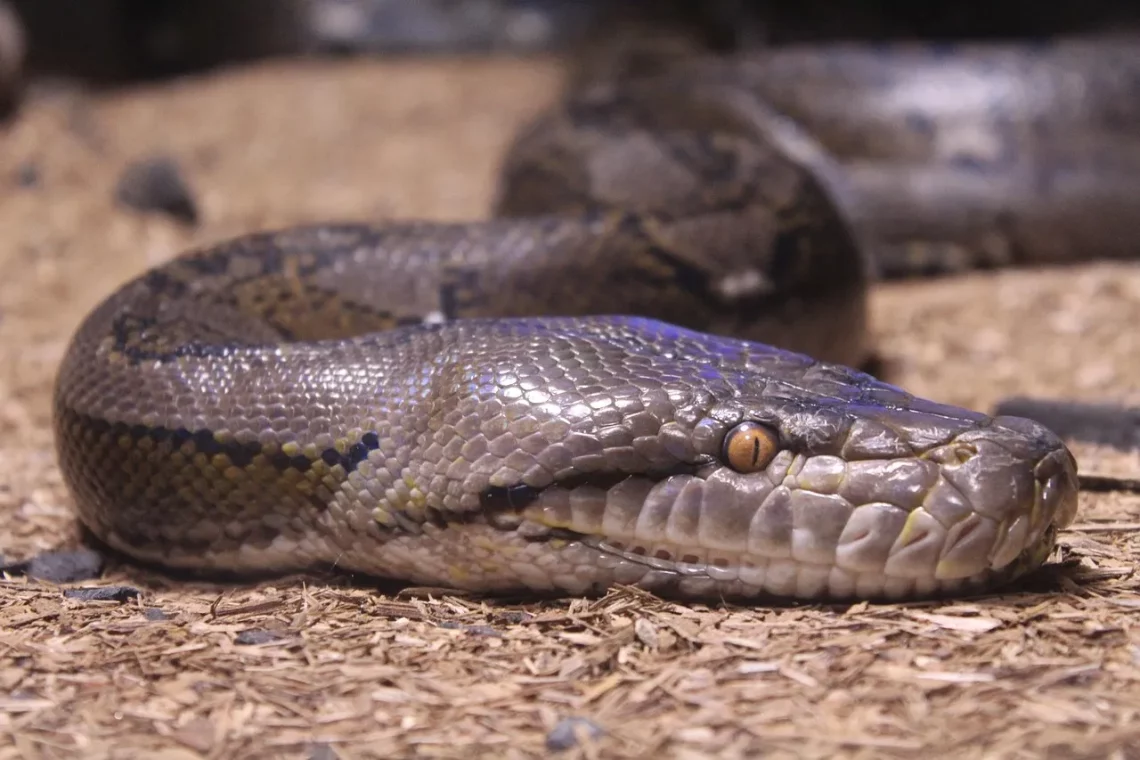
The Allure of Fancy Ball Pythons: A Guide to Their Care and Breeding
The world of exotic pets has gained immense popularity, with reptile enthusiasts drawn to the captivating allure of fancy ball pythons. These snakes, known for their striking patterns and calm demeanor, have become a favorite among both novice and experienced keepers. Their unique morphs, which showcase a wide range of colors and designs, make each individual a living piece of art. This fascinating aspect of ball pythons not only makes them visually appealing but also fuels the interest in breeding and caring for them.
As a species, ball pythons are relatively easy to care for, which further enhances their appeal. They are known for their docile nature, making them ideal pets for families and individuals alike. Understanding their needs in terms of habitat, diet, and social interaction is crucial for ensuring a healthy and happy snake. Furthermore, the growing community of breeders and enthusiasts provides a wealth of knowledge and resources for those looking to delve deeper into the world of these remarkable reptiles.
In this article, we will explore the various aspects of fancy ball pythons, from their care requirements to insights on breeding, and the factors that contribute to their status as one of the most sought-after pet snakes. Whether you’re considering adding one to your collection or simply want to learn more about these fascinating creatures, the world of fancy ball pythons is sure to captivate your imagination.
Understanding Ball Python Morphs
Ball pythons are renowned for their incredible variety of morphs, which are genetic variations that result in distinct color patterns and physical characteristics. Each morph offers something unique, making it an exciting venture for both breeders and hobbyists.
The most common morphs include the classic albino, which features a striking yellow and white coloration, and the pastel morph, known for its bright, vibrant hues. Other notable morphs include the spider, which is characterized by its unique pattern of markings, and the pinstripe, which boasts a clean, linear design. Each morph’s genetic makeup determines its appearance, and breeding different morphs can lead to the creation of new and exciting variations.
Understanding the genetics behind these morphs is essential for successful breeding. Breeders must familiarize themselves with dominant and recessive traits, as this knowledge will guide their pairing choices to achieve desired outcomes. It can be a complex but rewarding process that showcases the beauty and diversity of ball pythons.
Moreover, the market for fancy ball python morphs continues to grow. Enthusiasts are eager to acquire rare and visually stunning specimens, which can lead to substantial investment opportunities for breeders. However, this financial aspect should not overshadow the responsibility that comes with breeding. Ethical breeding practices must be prioritized to ensure the health and well-being of the animals involved.
In addition to their aesthetic appeal, the variety of morphs also allows for personal expression among owners. Many enthusiasts take pride in showcasing their collections, participating in exhibitions, and sharing their knowledge within the community. The bond between keeper and snake is often strengthened by the unique characteristics of each individual, making the experience of owning a fancy ball python truly special.
Creating the Ideal Habitat
Providing a suitable habitat for a ball python is crucial for their overall health and well-being. These snakes require an environment that closely mimics their natural habitat to thrive. The ideal enclosure should be spacious, secure, and equipped with the necessary elements to ensure a comfortable living space.
A glass terrarium or a plastic enclosure with adequate ventilation is usually recommended. The size of the enclosure will depend on the age and size of the snake, with juveniles needing less space than adults. As a general guideline, a 40-gallon tank is suitable for an adult ball python. It’s essential to ensure that the enclosure is escape-proof, as ball pythons are known for their ability to find small openings.
Temperature regulation is another critical aspect of creating a suitable habitat. Ball pythons are ectothermic, meaning they rely on external heat sources to regulate their body temperature. A temperature gradient should be established within the enclosure, with a warm side maintained at around 88-92°F and a cooler side at approximately 75-80°F. Providing a heat source, such as an under-tank heater or heat lamp, is essential for maintaining these temperatures.
Humidity levels also play a vital role in the care of ball pythons. The ideal humidity range is between 50-60%, which can be achieved through regular misting and the use of a water bowl. A substrate that retains moisture, such as coconut fiber or aspen shavings, can help maintain humidity levels while providing a comfortable surface for the snake to move around.
Additionally, providing hiding spots and climbing opportunities is important for the snake’s mental stimulation and security. Shelves, logs, and decorative plants can create a more enriching environment. Regular cleaning and maintenance of the habitat are also necessary to prevent the buildup of bacteria and ensure a healthy living space for your ball python.
Nourishing Your Fancy Ball Python
Feeding a ball python is a straightforward process, but understanding their dietary needs is essential for their health and longevity. In the wild, these snakes primarily feed on small mammals, such as rats and mice. As pets, they require a diet that mimics this natural feeding behavior.
When it comes to feeding, it’s important to provide appropriately sized prey items. A good rule of thumb is to offer prey that is about the same diameter as the widest part of the snake’s body. Juveniles typically eat smaller meals more frequently, while adults can be fed larger prey items less often. A feeding schedule of every 5-7 days for young snakes and every 10-14 days for adults is generally recommended.
Live prey can be offered, but many owners opt for frozen and thawed rodents to reduce the risk of injury to the snake. When using frozen prey, it’s crucial to thaw it properly and ensure it reaches a suitable temperature before feeding.
In addition to the type of prey, the overall health of the food source is paramount. Ensuring that the rodents are sourced from reputable suppliers and are free from diseases is vital for the snake’s health. Supplementing the diet with calcium and vitamins may also be beneficial, particularly for breeding females who may require additional nutrients.
Hydration is another critical aspect of a ball python’s care. Providing a clean water bowl that is large enough for the snake to soak in can help maintain hydration levels. Regularly changing the water and cleaning the bowl is essential to prevent bacterial growth.
Feeding time can also be an opportunity for bonding between the owner and the snake. Observing the snake during feeding can provide valuable insights into its behavior and preferences, allowing owners to better understand their pet’s needs.
Breeding Fancy Ball Pythons
Breeding ball pythons can be an exciting yet challenging endeavor for enthusiasts. Understanding the reproductive process and the necessary conditions for successful breeding is essential for anyone looking to venture into this aspect of keeping these snakes.
The breeding season for ball pythons typically occurs in the cooler months, often starting in the fall and continuing into the winter. During this time, males may become more active and display courtship behaviors. It’s crucial to ensure that both the male and female are in optimal health before introducing them for breeding.
To initiate breeding, a cooling period is often recommended for both snakes. This mimics their natural environment and encourages hormonal changes that facilitate reproduction. Gradually decreasing the temperature in their enclosures can help signal the onset of the breeding season.
Once the snakes are introduced, it’s important to observe their interactions closely. Mating can last several hours, and it’s not uncommon for the male to try multiple times before successfully copulating with the female. After successful copulation, the female will go through a gestation period of about 30-40 days before laying eggs.
The care of the eggs is crucial for successful hatching. Ball pythons typically lay between 4 to 10 eggs, which should be placed in an incubator with controlled temperature and humidity levels. The incubation period generally lasts around 60-70 days, during which the eggs should be monitored carefully.
Once the baby snakes hatch, they will require proper care to ensure their health and development. Providing a suitable environment, appropriate feeding, and socialization will aid in their growth and help them thrive as they transition to independent living.
Breeding fancy ball pythons can be an incredibly rewarding experience, but it comes with responsibilities. Ethical breeding practices should always be prioritized, ensuring that the health and well-being of the snakes are taken into consideration throughout the process.
In conclusion, fancy ball pythons are captivating creatures that continue to attract the attention of reptile enthusiasts around the world. Their stunning morphs, manageable care requirements, and the thrill of breeding make them a popular choice for both novice and experienced keepers. By understanding their needs, creating a suitable habitat, and practicing responsible breeding, you can enjoy a fulfilling journey with these remarkable reptiles.
**Note: This article is not intended as medical advice. For any health-related issues, please consult a qualified veterinarian.**




